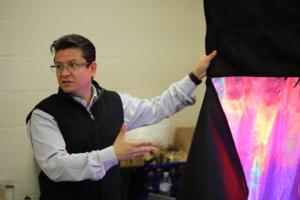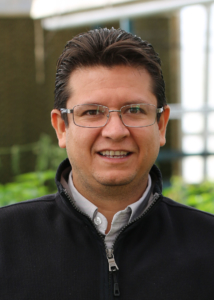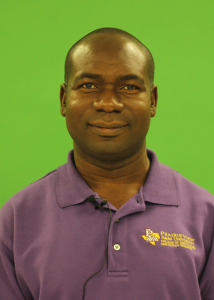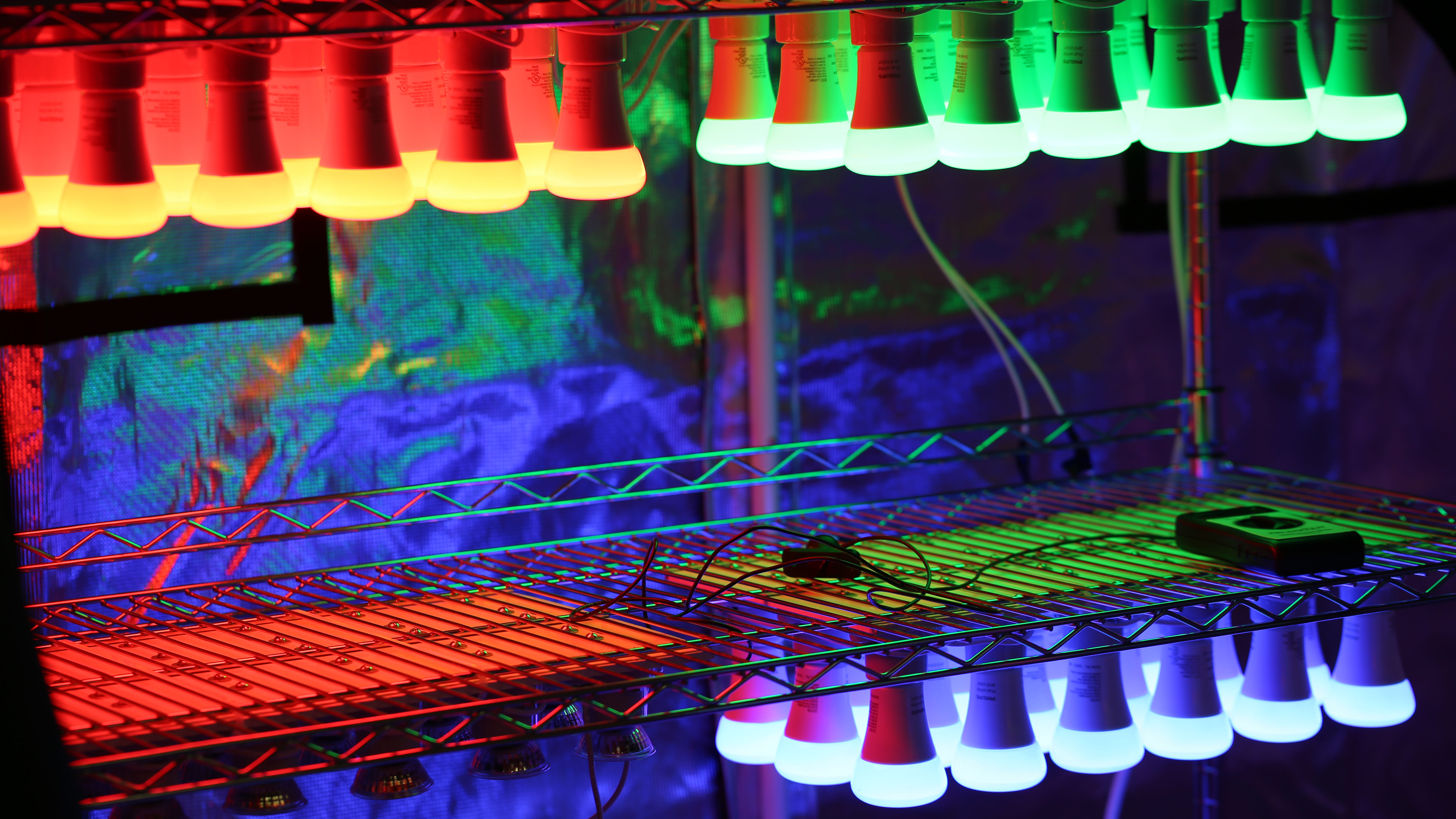By: Taelor Smith
February 18 – Research being done on Prairie View A&M University’s farm has extraordinary potential. A visiting Mechatronics Engineer from Mexico is collaborating with researchers from PVAMU’s College of Agriculture and Human Sciences, and what they’re cooking up could change the way astronauts eat in space.
 Dr. Ernesto Olvera is conducting research on the growth of microgreens here at Prairie View A&M University. Deciding to embark on this research journey was easy for the Mechatronics Engineer from Mexico. Having participated in other collaborative research in his home country with the College of Agriculture and Human Sciences Research Scientist Leader Dr. Deland Myers, Olvera could not pass up the chance to work with PVAMU once again. Connecting with Research Scientist Dr. Peter Ampim during his previous stay at the university, Olvera found a way to join his expertise with Ampim’s current study on growing specialty crops. Dr. Ampim was excited about the opportunity as well and notes that connecting with other researchers is always a great way to build a foundation. “It’s a matter of common interest. When you do research, you run into people with common interests. It’s exposure to work at an institution in another country and a good experience to study something related to what you’re doing.” In November 2018, the two researchers began their project to discover the ways light affects the growth of microgreens, specifically Egyptian spinach. Funding for Olvera’s research stay was supported by Consejo Nacional de Ciencia y Technología (CONACyT).
Dr. Ernesto Olvera is conducting research on the growth of microgreens here at Prairie View A&M University. Deciding to embark on this research journey was easy for the Mechatronics Engineer from Mexico. Having participated in other collaborative research in his home country with the College of Agriculture and Human Sciences Research Scientist Leader Dr. Deland Myers, Olvera could not pass up the chance to work with PVAMU once again. Connecting with Research Scientist Dr. Peter Ampim during his previous stay at the university, Olvera found a way to join his expertise with Ampim’s current study on growing specialty crops. Dr. Ampim was excited about the opportunity as well and notes that connecting with other researchers is always a great way to build a foundation. “It’s a matter of common interest. When you do research, you run into people with common interests. It’s exposure to work at an institution in another country and a good experience to study something related to what you’re doing.” In November 2018, the two researchers began their project to discover the ways light affects the growth of microgreens, specifically Egyptian spinach. Funding for Olvera’s research stay was supported by Consejo Nacional de Ciencia y Technología (CONACyT).
Planning this project, Olvera hoped to marry both his specialty with light engineering and Ampim’s focus in agriculture to discover if microgreens grow faster and affect its nutrition in certain types of lighting. “I don’t know anything about agronomy, but I know what’s going on with the light. Part of the light is absorbed by the plant and part of the light is reflected by the plant. The color
Throughout the course of the project, the fully-grown plants will be analyzed in the lab for their results and it is possible for variables to change throughout the production of these microgreens. Olvera will continue with this project at the university until April 2019 and then will return to his home university, Technological Institute of Pabellón de Arteaga in the Mexican state of Aguascalientes to make plans to share his findings with NASA. “This project is very related to the NASA projects. I want to travel to NASA in Florida and have a meeting with a researcher with NASA about this [research]. They are interested in growing products for salads – lettuce, spinach – because astronauts need to eat in space. In their travel, they plan to grow food and this could aid them while in space.”
Though his research on this project will come to an end at PVAMU, Olvera wants this study to go on beyond his departure from the university. “I came to learn from Dr. Ampim about the agronomy, about the nutrient content, height, weight, and everything. This has been a great experience for me to work with different persons than from my country. I would like for this project to continue after I am gone because this is something that changes continuously.”
For more information on this project, please contact Dr. Olvera or Dr. Ampim.
This work is supported by the USDA National Institute of Food and Agriculture, Evans-Allen 1890 Research Formula Program projects under Section 1445.

Dr. Ernesto Olvera
Visiting Researcher/Megatronics Engineer
e.olvera.itp@gmail.com

Dr. Peter Ampim
Research Scientist
paampim@pvamu.edu
(936) 261-5096

